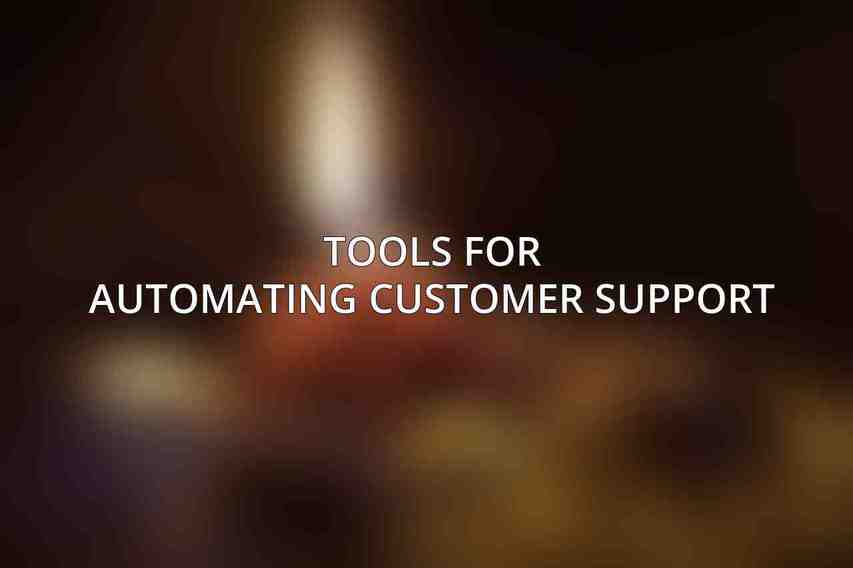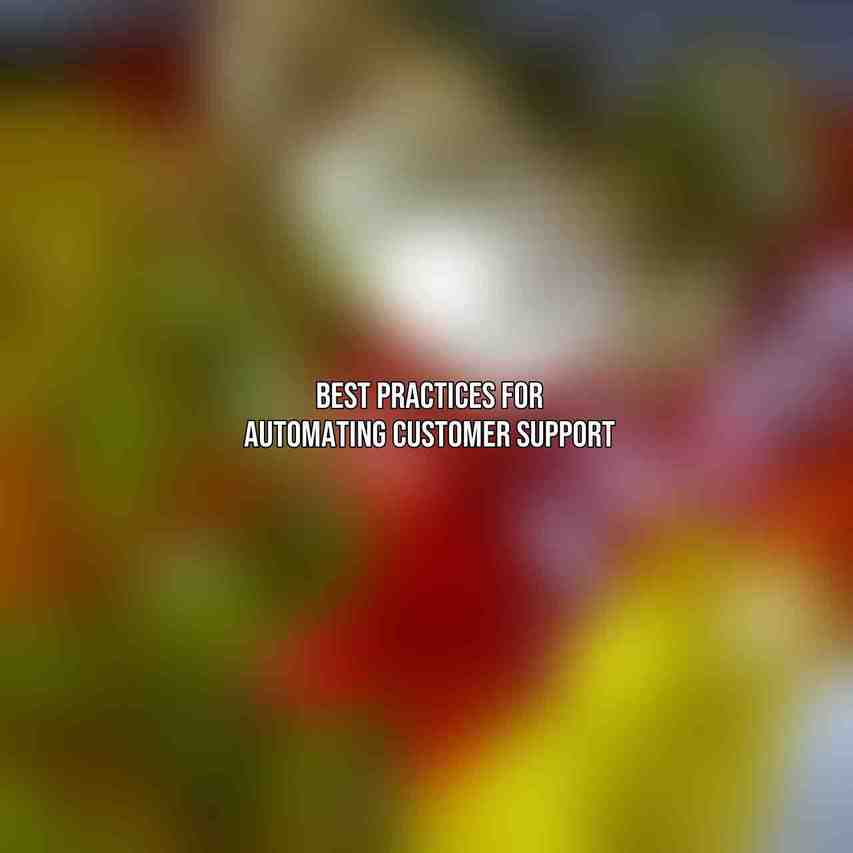Where customer interactions are crucial, the role of customer support cannot be understated. Efficient customer support is vital for building customer loyalty, resolving issues swiftly, and enhancing overall customer satisfaction. However, the traditional methods of providing customer support can be riddled with challenges such as scalability, time constraints, and consistency. This is where automation comes into play, offering a myriad of benefits for e-commerce businesses. You can find more information on 2024 Email Marketing Automation Strategies for E-Commerce
Automating customer support saves time, ensures 24/7 availability, and reduces the workload on support representatives by handling common queries autonomously. By implementing automated solutions, businesses can significantly enhance their operational efficiency and customer experience, leading to improved overall performance and reduced costs. You can find more information on Top E-Commerce Automation Tools Reviewed for 2024
Tools for Automating Customer Support

When it comes to automating customer support for e-commerce businesses, there are several tools available to streamline the process. Three primary tools include Chatbots, Virtual Assistants, and Self-Service Portals.
A. Chatbots
Chatbots are computer programs designed to simulate conversations with human users, providing instant responses and guidance. They come in different forms such as rule-based and AI-powered chatbots, each offering distinct functionalities. Rule-based chatbots follow predefined rules to respond to queries, while AI-powered chatbots leverage machine learning algorithms to enhance their responses dynamically.
B. Virtual Assistants
While chatbots focus on specific interactions, virtual assistants are more advanced and can handle complex tasks by interpreting natural language and providing personalized assistance. The key difference between chatbots and virtual assistants lies in their contextual understanding and ability to learn from interactions. Implementing virtual assistants can elevate the customer support experience by delivering more interactive and tailored responses.
C. Self-Service Portals
Self-service portals empower customers to find solutions on their own through resources like knowledge bases, FAQ sections, and community forums. These portals cater to customers who prefer instant resolutions and self-reliance. Integrating self-service portals with CRM systems and other platforms enhances the customer journey by providing a seamless experience across touchpoints.
Strategies for Automating Customer Support
Automating customer support requires a strategic approach to identify, prioritize, and personalize interactions effectively. By following structured strategies, businesses can maximize the benefits of automation.
A. Identifying and Prioritizing Automation Opportunities
Analyzing customer support requests is crucial in determining which processes can be automated effectively. By assessing the repetitive nature of requests and their complexity, businesses can prioritize automation projects based on their impact and feasibility.
B. Establishing Clear Automation Goals
Setting clear and measurable goals is essential for tracking progress and aligning automation initiatives with business objectives. By monitoring key performance indicators and adjusting strategies as needed, businesses can ensure their automation efforts drive tangible results. Learn more about Ultimate Guide to E-Commerce Workflow Automation
C. Personalizing Automated Interactions
Personalization plays a pivotal role in customer experience. By leveraging customer data and segmentation techniques, businesses can tailor automated responses to individual preferences. Incorporating natural language processing further enhances interactions, making them more contextual and human-like.
Best Practices for Automating Customer Support

To ensure the successful implementation of automated customer support, businesses should adhere to best practices that focus on integration, training, and continuous evaluation.
A. Integrating with Existing Systems
Integration with CRM platforms, ticketing systems, and other software is essential for maintaining a unified customer view. This integration facilitates a seamless flow of data, ensuring accurate and up-to-date customer information across all touchpoints.
B. Providing Robust Training
Equipping customer support staff with thorough training on automated systems is critical for efficient utilization. Establishing standardized workflows, protocols, and providing ongoing support helps staff utilize automation tools effectively, leading to consistency in customer interactions.
C. Monitoring and Evaluation
Regularly monitoring key metrics such as response time, resolution rate, and customer satisfaction is paramount for assessing the performance of automated systems. Conducting periodic audits and optimizing processes based on performance data allows businesses to continuously enhance their automated support offerings.
Case Studies and Success Stories
E-commerce businesses that have embraced automated customer support have witnessed significant improvements in customer satisfaction and operational efficiency. Amazon, for instance, has successfully integrated chatbots and self-service portals to streamline their customer support processes and enhance customer experiences. These success stories underscore the ROI and benefits that businesses can achieve through effective customer support automation.
automation is a powerful tool that e-commerce businesses can leverage to optimize their customer support operations. By employing the right tools, strategies, and best practices, businesses can enhance customer interactions, drive operational efficiency, and ultimately boost their bottom line.
Frequently Asked Questions
What are the benefits of automating customer support for e-commerce businesses?
Automating customer support for e-commerce businesses can lead to improved efficiency, reduced response times, increased customer satisfaction, and cost savings.
What are some common methods used to automate customer support for e-commerce businesses?
Common methods include implementing chatbots, AI-powered tools for ticket routing and prioritization, self-service portals, automated responses to common queries, and integrating customer support with e-commerce platforms.
How can automation help in handling a large volume of customer inquiries?
Automation can help in handling a large volume of customer inquiries by providing instant responses to common queries, routing complex issues to human agents, and reducing the workload on support teams, allowing them to focus on more strategic tasks.
What are the potential challenges of automating customer support for e-commerce businesses?
Some potential challenges include ensuring accuracy and relevance of automated responses, maintaining a seamless customer experience, effectively training and monitoring AI-powered tools, and addressing customer concerns about interacting with bots.
How can e-commerce businesses measure the success of their automated customer support initiatives?
E-commerce businesses can measure the success of their automated customer support initiatives by tracking key metrics such as response times, resolution rates, customer satisfaction scores, cost savings, and the impact on customer retention and sales.

